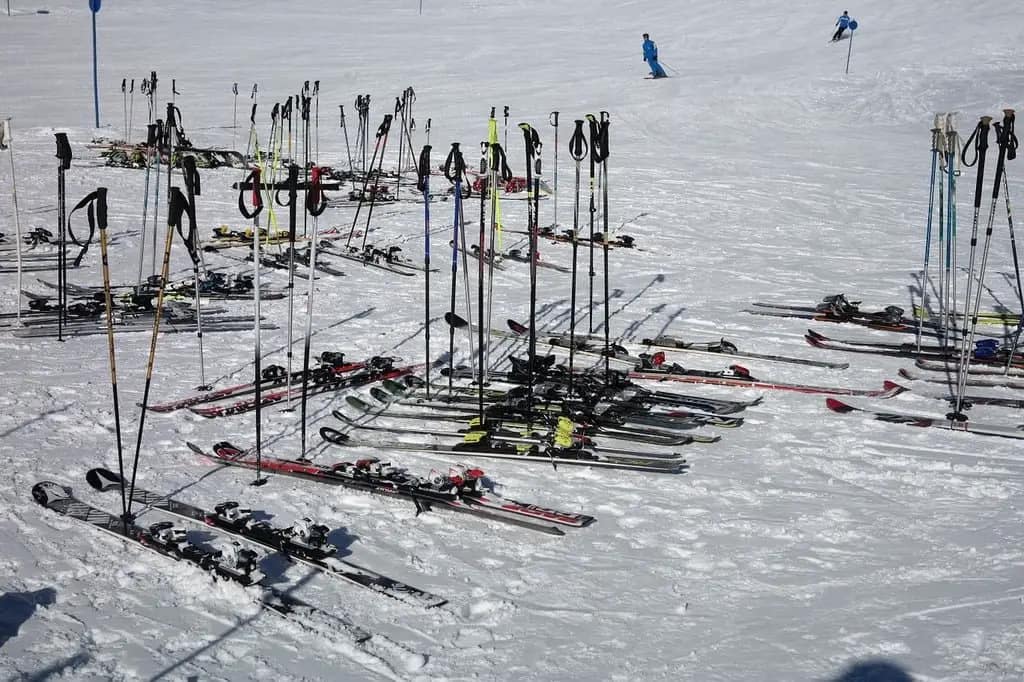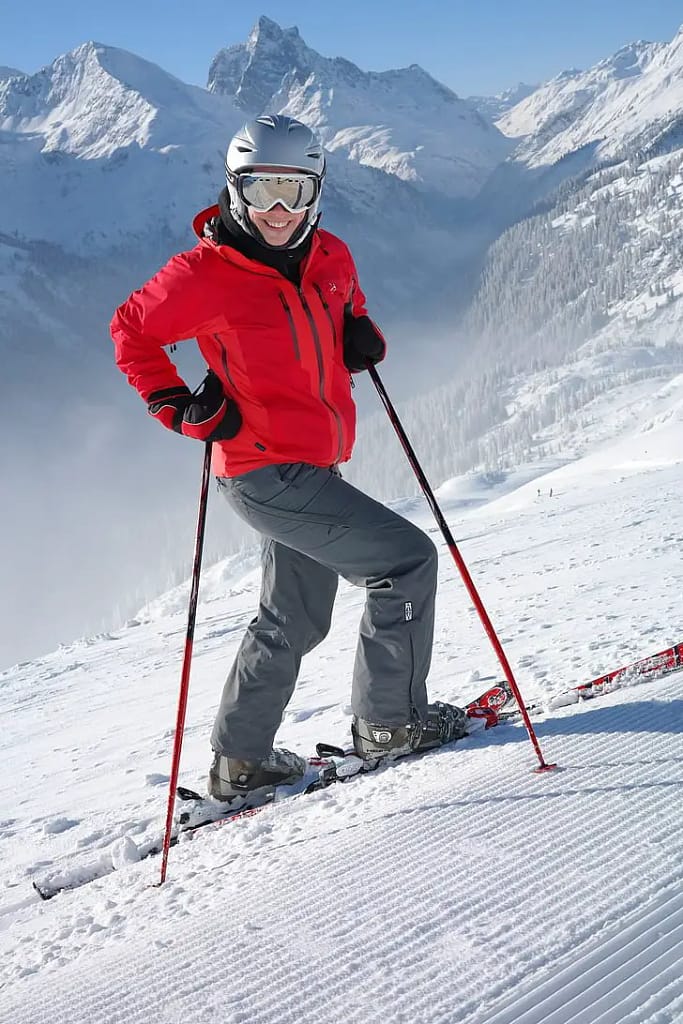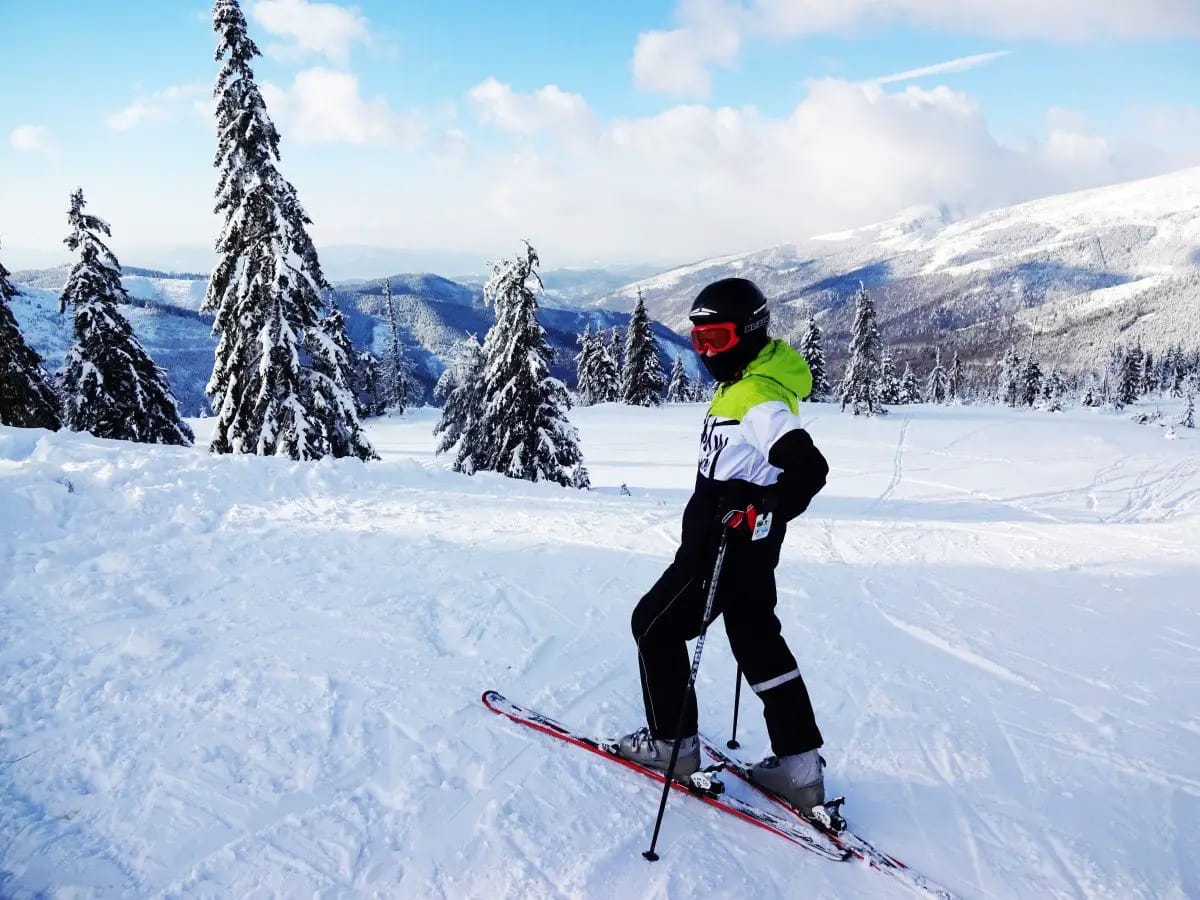Table of Contents
Introduction to Measuring Ski Poles
Embarking on the slopes without the right ski poles is like setting sail without a compass. But fear not, intrepid skier! Let’s delve into the art of measuring ski poles, ensuring your next descent is both exhilarating and secure. How do you measure ski poles, you ask? Stick with us, and you’ll become a maestro of measurement.
The Journey Begins – Understanding Ski Pole Measurement
Imagine gripping the perfect ski pole. It feels like an extension of your arm, doesn’t it? That’s what we’re aiming for. But here’s the kicker: size matters. Too long, and you’ll be awkwardly reaching for the snow; too short, and you’ll be hunching like you’re searching for lost treasure. We’ll guide you through the how to measure ski poles process with precision and ease.
The Tools of the Trade
Before we embark on this measurement quest, let’s talk tools. You don’t need a wizard’s wand or a pirate’s map; a simple tape measure will do the trick. With this in hand, you’re ready to conquer the mountain of measurement that lies ahead.
Measuring Up for Success
Now, the moment of truth: measuring your ski poles. It’s not rocket science, but it’s close to an art form. We’ll break it down step by step, ensuring you can measure up for success on the slopes. Ready to take the plunge?

Importance of Correct Ski Pole Size
Have you ever pondered the pivotal role that ski poles play in your snowy escapades? It’s not just about having any old poles in hand; the right size ski poles are your secret weapon for safety and performance. Let’s delve into why size really does matter when it comes to your trusty ski companions.
Impact on Performance
Imagine gliding effortlessly down a pristine slope, your turns as crisp as the mountain air. This isn’t just a dream—it’s what can happen when you have ski poles that are tailored to your height and skiing style. Correctly sized ski poles act as extensions of your arms, helping you maintain balance, timing, and rhythm. They give you the leverage needed for powerful pole plants and precise turns. With poles that are too short or too tall, you might find yourself overcompensating with awkward movements, which can throw off your groove and affect your speed and agility.
Safety Considerations
Now let’s talk safety—because hitting the slopes should be thrilling, not threatening. Ski poles that are too long can lead to overreaching, which may cause you to lose your balance and take a tumble. On the flip side, poles that are too short can make you lean forward excessively, putting unnecessary strain on your back and increasing the risk of injury. By choosing ski poles of the right size, you’re not just optimizing your performance; you’re also protecting yourself from potential accidents. Remember, the goal is to enjoy the mountain, not become an unwilling snow sculpture!
Basics of Ski Pole Measurement
Embarking on the journey of measuring ski poles is akin to finding the perfect wand in the wizarding world—it’s all about the right fit! Before you hit the snowy trails, understanding the basics of ski pole measurement is crucial. It’s not just about grabbing any pole; it’s about precision and personalization, ensuring your gear enhances your performance on the slopes.
Tools Needed
First things first, let’s talk tools. To measure your ski poles with the accuracy of a Swiss watch, you’ll need a tape measure or a ski pole sizer—a simple yet effective tool designed specifically for this purpose. Keep in mind, a regular household tape measure will do the trick, but for those who want to get it down to the last millimeter, a ski pole sizer is your go-to gadget.
Measurement Procedure
Now, let’s dive into the step-by-step guide on how to measure ski poles. Imagine you’re a sculptor, and your ski poles are your marble—it’s all about chiseling down to the perfect size.
- Stand upright, wearing your ski boots for an accurate stance.
- Flip the ski pole upside down, gripping it directly under the basket.
- Your elbow should be at a 90-degree angle—this is the sweet spot. If your arm is too high or too low, adjustments are needed.
- Mark the spot on the pole that aligns with the top of your hand. This is your ideal pole length.
Remember, the goal is to maintain a natural posture while skiing. A pole that’s too long or too short can throw off your balance and turn your graceful glides into a battle against the mountain.
Common Mistakes in Measuring Ski Poles
Embarking on the journey to measure your ski poles can be as slippery as a downhill run if you’re not careful. Avoiding common pitfalls is crucial to ensure you’re not left out in the cold with a pair of poles that hinder rather than help. Let’s delve into these mistakes and learn how to sidestep them with the grace of a seasoned skier.
Not Accounting for Skiing Style
One size does not fit all when it comes to ski poles. Your unique skiing style plays a pivotal role in determining the ideal pole length. Are you a downhill daredevil or a cross-country cruiser? Each discipline demands different pole specifications for optimal performance. A table comparing styles with suggested pole lengths could offer a clear visual guide:
| Skiing Style | Recommended Pole Length |
|---|---|
| Alpine / Downhill | Shorter for maneuverability |
| Cross-Country | Longer for propulsion |
| Freestyle | Varies based on preference |

Ignoring Arm Position
Picture this: you’re standing tall, yet your ski poles are awkwardly reaching for the stars. This is a tell-tale sign of a measurement mishap. The ideal pole length should allow your arms to rest at a comfortable 90-degree angle when the pole tip is planted in the snow. This position maximizes leverage and balance, key ingredients for a smooth ride down the slopes.
Forgetting About Pole Baskets
While they may seem like a mere accessory, pole baskets are essential in preventing your poles from sinking too deep into the snow. When measuring, ensure that you’re including the basket in the overall length — a detail that’s often overlooked but can make a world of difference, especially in powdery conditions.
Overlooking Adjustability
Adjustable ski poles are a game-changer, offering versatility for different terrains and conditions. If you’re investing in a pair, don’t make the mistake of measuring them incorrectly. Ensure they’re set to a length that suits your height and skiing style before hitting the slopes.
Choosing the Right Ski Poles After Measurement
Now that you’ve meticulously measured your ski poles, the next critical step is selecting the ideal pair to complement your skiing style and stature. This decision is not one to be taken lightly; after all, the right ski poles are an extension of your body as you glide down the slopes. Let’s ensure you’re equipped with the knowledge to make an informed choice.
Understanding Ski Pole Sizing
First things first, let’s talk numbers. Ski pole sizing is typically based on your height and the type of skiing you enjoy. As a rule of thumb, when you flip the ski pole upside down, grasping it directly under the basket, your elbow should be at a 90-degree angle. If you’re into downhill skiing, shorter poles might be your go-to, while cross-country aficionados often opt for longer poles.
Material Matters
Next, consider the material. Aluminum poles are durable and cost-effective, a solid choice for beginners. However, if you’re looking to shave off weight without sacrificing strength, carbon fiber is the way to go. Remember, the material can impact your skiing experience, so choose wisely based on your needs and budget.
Features and Ergonomics
Don’t overlook the features. Ergonomic grips can reduce hand fatigue, and adjustable straps add comfort and security. Some poles come with interchangeable baskets for different snow conditions – a handy feature for those who ski in varying terrains.
Style and Aesthetics
While function should be your primary focus, let’s not forget about style. Your ski poles are a reflection of your personality on the slopes. Whether you prefer a sleek, minimalist look or something bold and colorful, make sure your poles are a statement of your individuality.
Table: Ski Pole Size Chart
| Skier’s Height | Pole Length (Alpine) | Pole Length (Nordic) |
|---|---|---|
| 4’8″ | 40 in | 52 in |
| 5’0″ | 42 in | 54 in |
| 5’2″ | 44 in | 56 in |
| 5’4″ | 46 in | 58 in |
| 5’6″ | 48 in | 60 in |
| 5’8″ | 50 in | 62 in |
| 5’10” | 52 in | 64 in |
| 6’0″ | 54 in | 66 in |
| 6’2″ | 56 in | 68 in |
| 6’4″ | 58 in | 70 in |
Armed with your measurements, material knowledge, and an understanding of the features that enhance your skiing, you’re all set to select the ski poles that will serve you best. Remember, the right ski poles will feel like a natural extension of your arms, seamlessly aiding in your snowy adventures.
Final Tips
Before you make your purchase, here are a few final tips: test the poles if you can, read reviews from fellow skiers, and don’t hesitate to ask for professional advice at your local ski shop. With these insights, you’re ready to make a choice that will elevate your skiing experience to new heights.
Maintaining Your Ski Poles
Ensuring your ski poles remain in top-notch condition is crucial for peak performance and safety. Let’s dive into the best practices for ski pole care, a topic often overlooked but essential for any skier who values their gear.
Regular Inspection
Like a trusty car that needs its regular check-up, your ski poles deserve the same attention. Inspect your poles for any signs of wear or damage before and after each ski trip. Look for dents, scratches, or bends in the shaft, and ensure the grips and straps are secure and comfortable. Don’t forget the baskets and tips – they should be firmly attached and free of excessive wear.
Cleaning and Storage
After a thrilling day on the slopes, your ski poles can accumulate grime and moisture. Clean them with a soft, damp cloth and dry them thoroughly to prevent rust and corrosion. When storing, find a cool, dry place away from direct sunlight to prevent any warping or fading of the material. Remember, proper storage is as important as the thrill of the descent!
Seasonal Tune-Up
As seasons change, so should your approach to ski pole maintenance. A seasonal tune-up can make all the difference. This might include tightening screws, replacing worn-out baskets, or re-wrapping grips for a better hold. If you’re unsure how to perform these tasks, seek advice from a professional at your local ski shop.
Conclusion
As we glide to the end of our insightful journey on how to measure ski poles, it’s crystal clear that the right fit isn’t just a matter of preference—it’s a cornerstone of your skiing experience. Embracing the correct ski pole size is akin to finding the perfect dance partner; it enhances your rhythm on the slopes and keeps you safe during your snowy waltz.
Throughout this guide, we’ve carved through the significance of precision in measurement and selection, ensuring that your ski poles are not merely accessories but extensions of your athletic prowess. Remember, a ski pole that fits just right is a silent ally, propelling you forward with every pole plant, and guarding you against the unforeseen tumbles.
Whether you’re a seasoned skier or fresh tracks in the snow, let this knowledge serve as your beacon on the slopes. With the right-sized ski poles in hand, you’re not only equipped for performance but also safeguarded for the journey. So, before you next hit the powdery trails, take a moment to measure, choose wisely, and maintain your ski poles, ensuring they serve you well through every turn and every thrill.
Now, you’re ready to conquer the mountains with confidence, knowing that every detail, including your ski pole size, is tailored for your ultimate skiing experience. Happy skiing!
FAQs
Q1: How often should I measure my ski poles?
Ideally, you should measure your ski poles whenever you’re considering a new pair or if you feel your skiing style or body mechanics have changed significantly. For most recreational skiers, this might be every few years. However, if you’re growing (hello, younger skiers!) or you’re changing your skiing discipline, you’ll want to re-measure. Remember, having the right ski pole length can make a big difference in your control and comfort on the slopes.
Q2: Can I use any tool to measure my ski poles?
While you can get a rough estimate with any measuring tool, for the best accuracy, it’s recommended to use a tape measure. If you’re in a pinch, you could use a piece of string or rope and then measure that length against a ruler or yardstick. Just make sure whatever you’re using can measure in either centimeters or inches, as ski poles are often sized using these units.
Q3: What should I do if my ski poles are the wrong size?
If you’ve discovered that your ski poles aren’t the right fit, don’t worry! If they’re too long, some ski shops can cut them down to size. However, if they’re too short, you’ll likely need to purchase new ones. The right size poles are crucial for proper technique and safety, so consider it an investment in your skiing future. Plus, you can always keep the old ones as a backup or pass them on to a friend!
Q4: How does ski pole size affect my performance on the slopes?
Ski pole size can greatly impact your performance. Poles that are too long can throw off your balance, making it harder to turn and navigate the slopes. On the flip side, poles that are too short won’t provide enough support for proper push-off during cross-country skiing or help you maintain a good rhythm during alpine skiing. The right-sized poles will help you maintain proper posture and balance, which translates into smoother, more efficient skiing.
Q5: What are the signs of a poorly sized ski pole?
There are a few telltale signs that your ski poles might not be the right size for you. If you find yourself hunching over or your arms are too straight while holding your poles, they might be too short or too long, respectively. Your forearms should be parallel to the ground when you hold your poles with the tips touching the snow. Also, if you’re frequently hitting your ski tips with your poles or struggling to plant them firmly in the snow, it might be time for a re-measurement.
Further Reading and Resources
For more information on measuring and choosing ski poles, check out these resources:





No responses yet